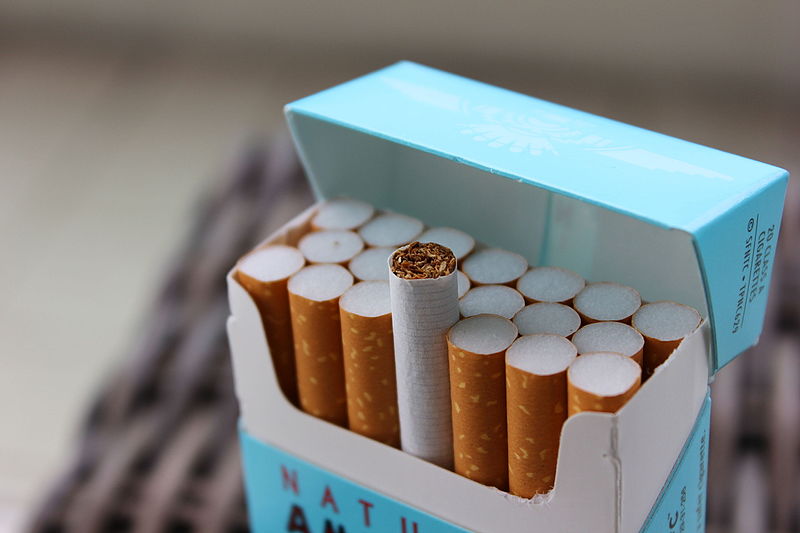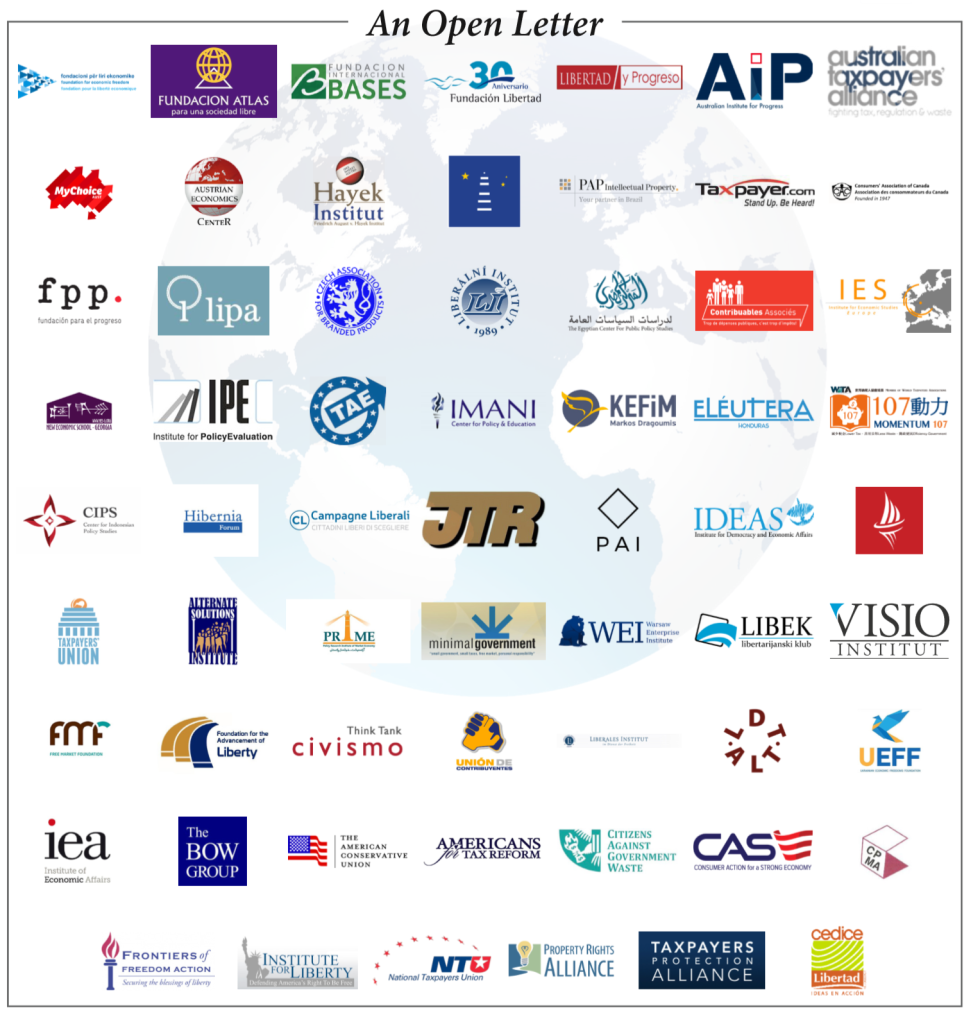December 1, 2017, marked the five-year anniversary of the full implementation of plain packaging in Australia. The removal of brands and trademarks from packaging remains a gross violation of intellectual property rights and has failed to achieve its intended goal. As a global coalition of sixty-two think tanks, advocacy groups and civil-society organizations that have been critical of plain packaging for any product, we write in response to proposed plain packaging tobacco control measures and to the announcements by several countries of their interest in pursuing these policies.
Intellectual property rights are human rights enshrined in the Universal Declaration of Human Rights: Article 17, the right to ownership; Article 19, the right to freedom of expression; and Article 27, the right to protection of material interests. In this regard, even if plain packaging is effective, it should still be repealed, as rights are inalienable and should not be discarded for political purposes.
International trade law, the UNDHR, and historic international treaties are designed to protect intellectual property for this very purpose. The innovation incentive created by trademarks fuels competition and produces amazing products demanded by consumers like affordable medical advances that save lives. Obviously, any loophole should be closed, not exploited.
Plain packaging in Australia has been a complete failure and has not met its overall policy objective to reduce smoking incidence. The latest independent research on the impact of plain packaging in Australia, using data paid for by the Commonwealth government, finds “no statistically significant difference in effectiveness of the graphic health warning as a result of the policy being introduced—if anything that effectiveness declined.”1 Moreover, the Australian government collects data on national smoking behavior every three years as part of its National Drug Strategy Household Survey (NDSHS).
The most recent batch of data is from 2016, and for the first time in 23 years, it reports no statistically significant decline in the overall daily smoking rate between 2013 (12.8%) and 2016 (12.2%).2 Plain packaging continues to offer evidence that it will never achieve its intended goal; it is time to end five years of failure. Instead, protecting intellectual property, the right to brand products and earn a reputation in the marketplace must remain paramount.
Other solutions exist that do not infringe on intellectual property rights and are closely linked to a marked reduction in the adult smoking rate. In the United Kingdom, for instance, after e-cigarettes became mainstream, the rate dropped from 20.4% in 2012 to 15.8% in 2016.3 In fact, the Royal College of Physicians reassured and encouraged smokers there to use the products,4 finding their associated harm unlikely to exceed 5% of the harm associated with smoking tobacco. On the other hand, plain packaging itself is associated with significant unintended consequences that continue to plague Australia and other countries that have adopted the measure.
Branded packaging is an essential product component that allows consumers to differentiate between legal and non-legal tobacco. When all packs look alike, consumers become less aware of brand differences. This is known as ‘commoditization,’ which often results in consumers prioritizing price over other quality concerns. This plays directly into the hands of the illegal tobacco trade which does not pay taxes or maintain quality standards and can thus charge significantly lower prices for cigarettes. The growth of the illegal tobacco market undermines public health, as its cheaper products encourage initiation and consumption while its sellers do not restrict their sales to adult consumers.
In Australia, it is estimated that the level of illegal tobacco consumption has increased over the last five years, reaching 13.9% of total consumption in 2016 and representing an excise loss of AUS 1.6 billion.5 The Australian government has been criticized for not tasking an agency to focus on the illicit market or to produce a report on the size and growth the industry despite it being a clear national security threat.6
Illicit tobacco is linked to the funding of terrorist groups and criminal syndicates.7 In France, the largest consumer of contraband and counterfeit cigarettes in Europe, the estimated excise loss to the French Government was approximately EUR 2 billion in 2016.8 This illicit trade has been linked to a large proportion of jihadists travelling to Syria and Iraq, as well as terrorist attacks in France.9 Counterfeit cigarettes remain the most investigated IP-crime in the UK and are linked directly to criminal organizations.10 Authorities there recently identified the first counterfeit plain-packaged packs.11
The destructive global implications don’t stop there. Australia is facing a dispute resolution panel at the WTO for implementing plain packaging. The panel has yet to draw their conclusion. However, the perambulatory text in the WTO Trade Related Aspects of Intellectual Property Rights (TRIPS) agreement declares its purpose is to “to reduce distortions and impediments to international trade…. and to ensure that measures and procedures to enforce intellectual property rights do not themselves become barriers to legitimate trade.” Requiring packaging to be void of ownership marks in order to dissuade consumers is a prime example of regulations acting to distort, impede, and prevent trade.
The United States, Germany, Sweden, Switzerland and Japan standout in international indexes for their protection of intellectual property rights. It is no coincidence that these countries have either never entertained the measure or rejected it entirely when it was proposed. IP-intensive industries drive these knowledge-based economies.
According to the USPTO IP and the U.S. Economy 2016 update, 30% of total employment, 45.5 million jobs, are tied to IP-intensive industries. The largest share, 23.7 million jobs, are directly tied to trademark-intensive industries.12 The EUIPO 2016 report on IP and the EU economy finds similar results: 38% of total employment, 82 million jobs, are tied to IP-intensive industries; trademark-intensive industries also represent the largest share employing 45 million directly and 19.6 million indirectly. 13 In 2014, these jobs produced more than 42% of the EU’s GDP and 38% in the U.S. Together they accounted for 18.5% of the world’s total production.
After Australia implemented the policy, other industries have been targeted around the world: alcohol, sugary beverages, fatty foods, even toys. These industries employ millions and any regulation that would deny key IP assets would have a devastating global economic impact. The trademark value alone of only twelve companies associated with these sectors is estimated to be more than USD 1.8 trillion.14
The costs of plain packaging are enormous: the loss of the innovation incentive to the economy and society are inestimable, the mutilation of established international IP law is unprecedented, and the market carve-out to illicit actors, including terrorists, is reprehensible. It is beyond reason that such a policy continues to be pursued, even after it has failed to achieve its intended goal.
We urge the WHO and governments around the world to stop infringing on intellectual property rights with plain packaging policies.
This open letter of a global coalition of 62 think tanks and rights advocates was sent to the new WHO Director Tedros Ghebreyesus on March 22, 2018.
1Davidson Sinclair and Ashton De Silva, “What the Government Demanded As Proof for Plain Packaging Efficacy: An Analysis the Public Health Lobby Did Not Perform” (RMIT University, May 3, 2017), https://ssrn.com/abstract=2962216.
2“National Drug Strategy Household Survey 2016,” Drug Statistic Series No. 31 (Australian Government, Australian Institute of Health and Welfare, 2017), https://www.aihw.gov. au/getmedia/15db8c15-7062-4cde-bfa4-3c2079f30af3/21028.pdf.aspx?inline=true.
3Christopher Snowdon, “Vaping Solutions: An Easy Brexit Win” (Institute for Economic Affairs, November 3, 2017), https://iea.org.uk/publications/vaping-solutions-an-easybrexit-win/.
4“Nicotine Without Smoke: Tobacco Harm Reduction” (Tobacco Advisory Group of the Royal College of Physicians, April 2016), https://www.rcplondon.ac.uk/projects/outputs/ nicotine-without-smoke-tobacco-harm-reduction-0.
5“Illicit Tobacco in Australia” (KPMG, March 20, 2017), https://home.kpmg.com/content/dam/kpmg/uk/pdf/2017/04/Australia-illict-tobacco-Report-2016.pdf.
6Mark Lauchs and Rebecca Keane, “An Analysis of the Australian Illicit Tobacco Market,” Journal of Financial Crime 24, no. 1 (2017): 35–47.
7Louise Shelley, “The Diverse Facilitators of Counterfeiting: A Regional Perspective,” Journal of International Affairs, Transnational Organized Crime, 66, no. 1 (2012), http:// www.jstor.org/stable/24388249.
8“Project Sun: A Study of the Illicit Cigarette Market in the European Union, Norway and Switzerland” (KPMG, 2017), https://assets.kpmg.com/content/dam/kpmg/uk/ pdf/2017/07/project-sun-2017-report.pdf.
9“Illicit Trade and Terrorism Financing” (Center for the Analysis of Terrorism, December 2016), http://cat-int.org/wp-content/uploads/2017/03/Interim-note-Illicit-trade-and-terrorism-financing-Dec-2016.pdf.
10IP Crime Group, “IP Crime and Enforcement Report 2016/2017” (Intellectual Property Office, 2017), https://www.gov.uk/government/uploads/system/uploads/attachment_data/ file/642324/IP_Crime_Report_2016_-_2017.pdf.
11Jack Courtez, “EXCLUSIVE: First Fake Plain Packs Discovered, Rogue Retailers Making ‘Small Fortune,’” BetterRetailing.com, November 10, 2017, https://www.betterretailing.com/first-fake-plain-packs-discovered.
12Justin Antonipillai and Michelle Kee, “Intellectual Property and the U.S. Economy: 2016 Update” (United States Patent and Trademark Office, Economics and Statistics Administration, 2016), https://www.uspto.gov/sites/default/files/documents/IPandtheUSEconomySept2016.pdf.
13European Patent Office and European Union Intellectual Property Office, “Intellectual Property Rights Intensive Industries and Economic Performance in the European Union,” 2016, https://euipo.europa.eu/tunnel-web/secure/webdav/guest/document_library/observatory/documents/IPContributionStudy/performance_in_the_European_Union/performance_in_the_European_Union_full.pdf.
14Paola Norambuena, Janine Stankus, and Mark Kersteen, “Interbrand Best Global Brands 2017” (Interbrand, 2017), http://interbrand.com/wp-content/uploads/2018/03/Best-Global-Brands-2017.pdf.




